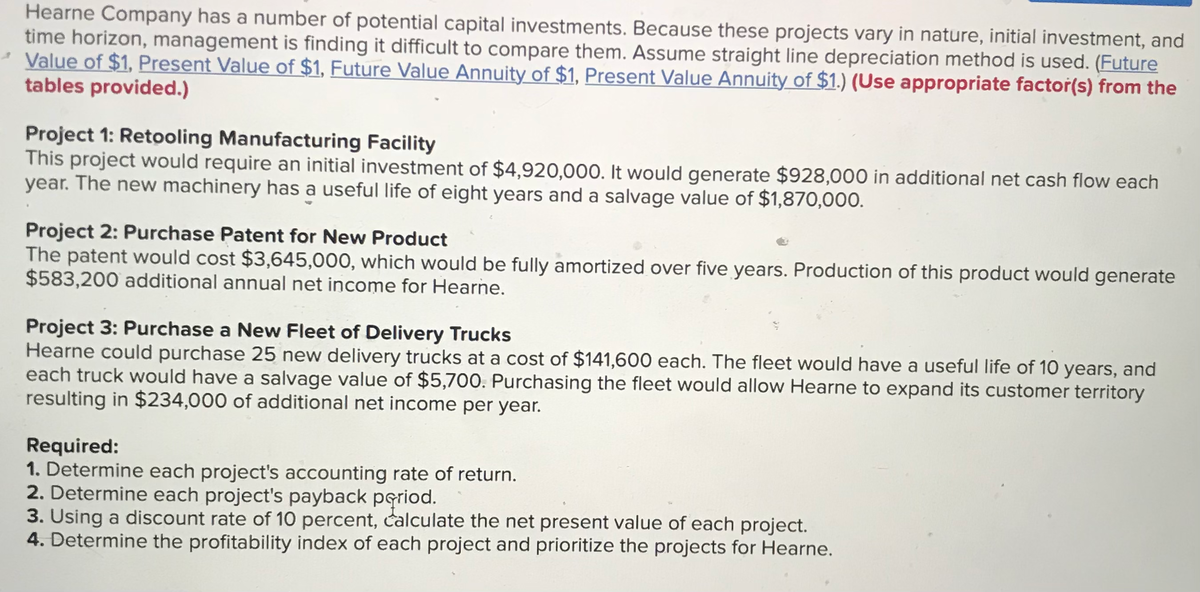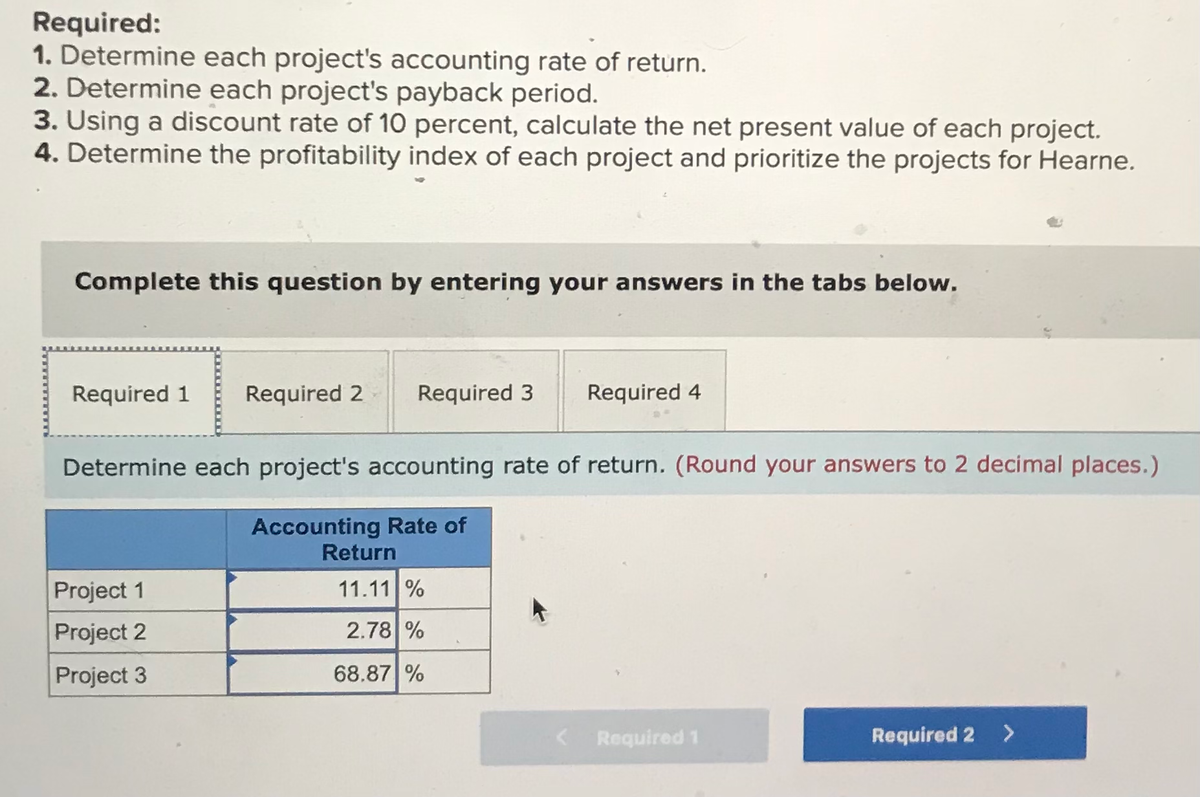counting class I am learning to find accounting rate of return. To solve for this I subtracted net cash flow- the salvage value divided by the initial investment. Have I done somethin
counting class I am learning to find accounting rate of return. To solve for this I subtracted net cash flow- the salvage value divided by the initial investment. Have I done somethin
Managerial Accounting
15th Edition
ISBN:9781337912020
Author:Carl Warren, Ph.d. Cma William B. Tayler
Publisher:Carl Warren, Ph.d. Cma William B. Tayler
Chapter12: Capital Investment Analysis
Section: Chapter Questions
Problem 1MAD: San Lucas Corporation is considering investment in robotic machinery based upon the following...
Related questions
Topic Video
Question
In my accounting class I am learning to find accounting

Transcribed Image Text:Hearne Company has a number of potential capital investments. Because these projects vary in nature, initial investment, and
time horizon, management is finding it difficult to compare them. Assume straight line depreciation method is used. (Future
Value of $1, Present Value of $1, Future Value Annuity of $1, Present Value Annuity of $1.) (Use appropriate factor(s) from the
tables provided.)
Project 1: Retooling Manufacturing Facility
This project would require an initial investment of $4,920,000. It would generate $928,000 in additional net cash flow each
year. The new machinery has a useful life of eight years and a salvage value of $1,870,000.
Project 2: Purchase Patent for New Product
The patent would cost $3,645,000, which would be fully amortized over five years. Production of this product would
$583,200 additional annual net income for Hearne.
generate
Project 3: Purchase a New Fleet of Delivery Trucks
Hearne could purchase 25 new delivery trucks at a cost of $141,600 each. The fleet would have a useful life of 10 years, and
each truck would have a salvage value of $5,700. Purchasing the fleet would allow Hearne to expand its customer territory
resulting in $234,000 of additional net income per year.
Required:
1. Determine each project's accounting rate of return.
2. Determine each project's payback pgriod.
3. Using a discount rate of 10 percent, calculate the net present value of each project.
4. Determine the profitability index of each project and prioritize the projects for Hearne.

Transcribed Image Text:Required:
1. Determine each project's accounting rate of return.
2. Determine each project's payback period.
3. Using a discount rate of 10 percent, calculate the net present value of each project.
4. Determine the profitability index of each project and prioritize the projects for Hearne.
Complete this question by entering your answers in the tabs below.
Required 1
Required 2
Required 3
Required 4
Determine each project's accounting rate of return. (Round your answers to 2 decimal places.)
Accounting Rate of
Return
Project 1
11.11 %
Project 2
2.78 %
Project 3
68.87 %
Required 1
Required 2 >
Expert Solution
This question has been solved!
Explore an expertly crafted, step-by-step solution for a thorough understanding of key concepts.
Step by step
Solved in 2 steps with 2 images

Knowledge Booster
Learn more about
Need a deep-dive on the concept behind this application? Look no further. Learn more about this topic, finance and related others by exploring similar questions and additional content below.Recommended textbooks for you

Managerial Accounting
Accounting
ISBN:
9781337912020
Author:
Carl Warren, Ph.d. Cma William B. Tayler
Publisher:
South-Western College Pub

Intermediate Financial Management (MindTap Course…
Finance
ISBN:
9781337395083
Author:
Eugene F. Brigham, Phillip R. Daves
Publisher:
Cengage Learning


Managerial Accounting
Accounting
ISBN:
9781337912020
Author:
Carl Warren, Ph.d. Cma William B. Tayler
Publisher:
South-Western College Pub

Intermediate Financial Management (MindTap Course…
Finance
ISBN:
9781337395083
Author:
Eugene F. Brigham, Phillip R. Daves
Publisher:
Cengage Learning


EBK CONTEMPORARY FINANCIAL MANAGEMENT
Finance
ISBN:
9781337514835
Author:
MOYER
Publisher:
CENGAGE LEARNING - CONSIGNMENT

Principles of Accounting Volume 2
Accounting
ISBN:
9781947172609
Author:
OpenStax
Publisher:
OpenStax College